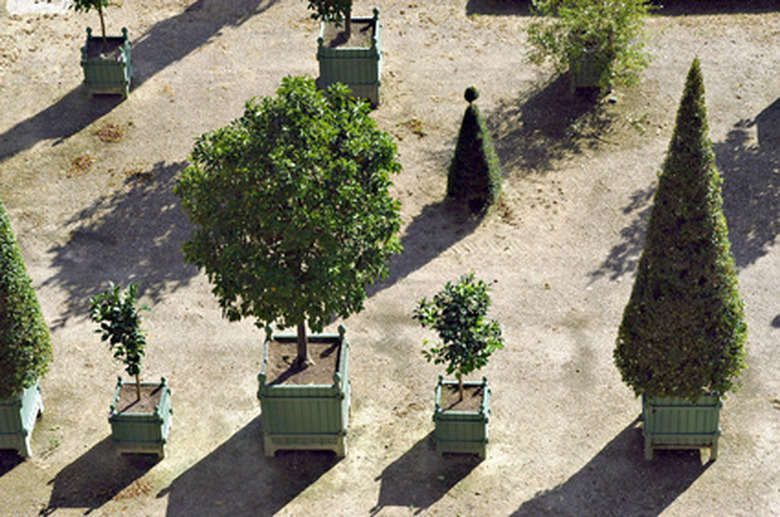Bay Tree Pests & Diseases
Bay trees are tall, graceful landscape trees that are relatively disease-resistant, but this does not mean your bay tree will never suffer from any bay tree pests and diseases. The best way to keep your bay tree healthy is to be aware of the different signs and symptoms of problems so that you can act quickly to help your tree if necessary.
Powdery Mildew
If your bay tree regularly has standing water on its leaves due to poor air circulation or sprinkler watering, then powdery mildew can become a problem for the tree. Powdery mildew looks like a heavy coating of chalk dust on the branches and leaves of the tree. It is largely a cosmetic issue, but it can weaken the tree and leave it more susceptible to other forms of infection. Remove all affected leaves and twigs of the tree using sterile pruning technique and dispose of the tree debris in a sealed garbage bag or by burning. Monitor your tree for recurring symptoms, and, should pruning not keep the infection at bay, you can treat it with a fungicide.
- Bay trees are tall, graceful landscape trees that are relatively disease-resistant, but this does not mean your bay tree will never suffer from any bay tree pests and diseases.
P. Ramorum
P. Ramorum is a fungal infection that causes blackening of bay leaves and the formation of yellow lesions on the leaf. Left unchecked, black spots may form on the leaves and branch dieback may occur. Use sterile pruning to remove all affected branches and leaves from the bay tree and dispose of all plant material in a sealed garbage bag or by burning. Also, rake all plant material out from under the tree to prevent reinfection. This disease is not fatal to bay trees, according to reports by the UC Berkeley Cooperative Extension, but it can contribute to sudden oak death and you should closely monitor any oak trees in the vicinity of an infected bay.
Bay Suckers
Bay suckers, also called jumping plant lice, cause bay leaves to yellow, thicken and wilt as they suck the sap out of the tree's foliage. Use sterile pruning to remove affected leaves on sight and dispose of all plant matter in sealed garbage bags or by burning. Spray the upper and lower sides of all your tree's leaves with a diluted dish soap solution to prevent the bay suckers from returning. You can treat bay sucker problems with pesticides, but then you must not use the leaves in any home remedies or alternative medicine treatments.
- P. Ramorum is a fungal infection that causes blackening of bay leaves and the formation of yellow lesions on the leaf.
- Use sterile pruning to remove all affected branches and leaves from the bay tree and dispose of all plant material in a sealed garbage bag or by burning.
